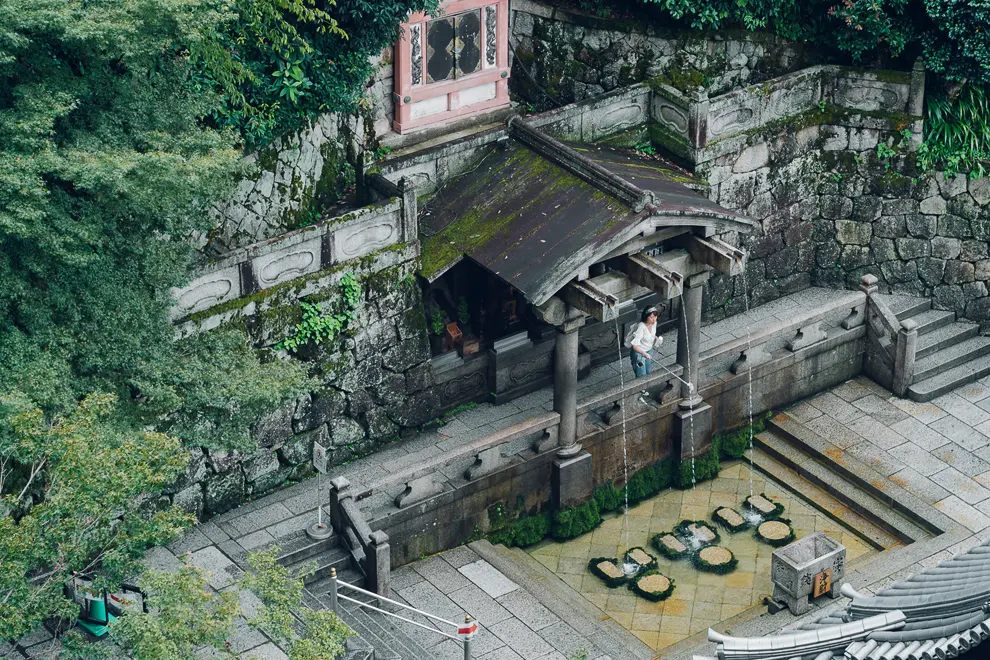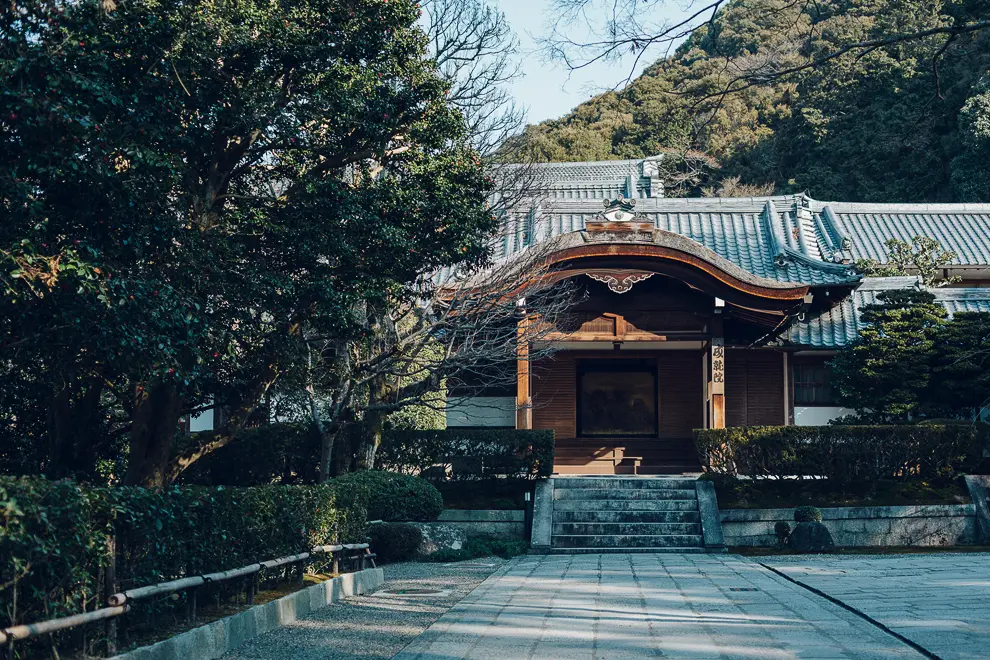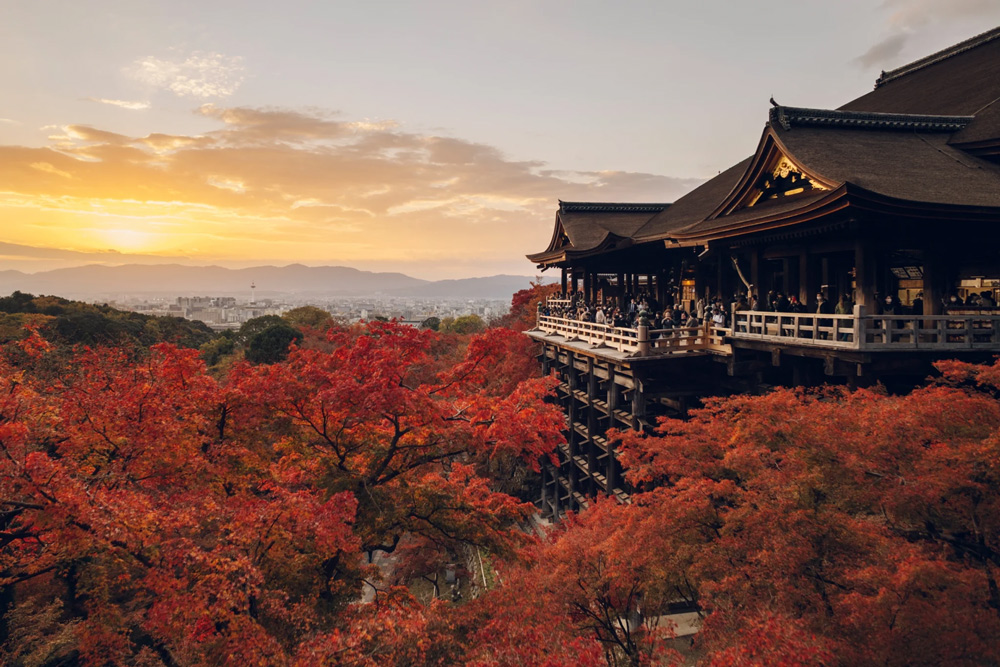Exploring Kiyomizu-dera
Kiyomizu-dera (清水寺), meaning “Pure Water Temple,” is one of the most celebrated temples in Japan, situated in the heart of Kyoto. Known for its breathtaking views, rich history, and stunning architecture, this UNESCO World Heritage site attracts millions of visitors every year.
Key Highlights:
- Spectacular Wooden Stage: Offering panoramic views of Kyoto.
- Otowa Waterfall: Three streams of water believed to confer different benefits.
- Jishu Shrine: A shrine dedicated to the deity of love and matchmaking.
- Seasonal Beauty: Cherry blossoms in spring and vibrant maple leaves in autumn.

Historical Background
Kiyomizu-dera was founded in 780 on the site of the Otowa Waterfall in the wooded hills east of Kyoto. The temple was originally associated with the Hosso sect, one of the oldest schools within Japanese Buddhism. The main hall, with its large wooden stage, was built without the use of nails and offers a spectacular view of cherry and maple trees, as well as the city of Kyoto in the distance.
Over the centuries, Kiyomizu-dera has been rebuilt and renovated several times. The current buildings date back to 1633 when they were reconstructed under the orders of the third Tokugawa shogun, Tokugawa Iemitsu.
Main Attractions
1. The Main Hall (Hondo) and Stage
The main hall is renowned for its wooden stage that juts out over the hillside, supported by hundreds of wooden pillars. This stage offers visitors a panoramic view of the cherry blossoms and maple trees that cover the hillside and the cityscape of Kyoto.

2. Otowa Waterfall
At the base of Kiyomizu-dera’s main hall is the Otowa Waterfall, where three channels of water fall into a pond. Visitors use cups attached to long poles to drink from these streams. Each stream is believed to have a different benefit: longevity, success at school, and a fortunate love life. However, drinking from all three streams is considered greedy.

3. Jishu Shrine
Located behind the main hall is the Jishu Shrine, dedicated to Okuninushi, a god of love and “good matches.” The shrine is particularly popular among young people seeking luck in love. It features two “love stones” placed 18 meters apart. It is said that if you can walk from one stone to the other with your eyes closed, you will find true love.

Best Time to Visit
The best times to visit Kiyomizu-dera are during the cherry blossom season in spring and the autumn foliage season. These periods offer the most stunning views, but they are also the busiest times, so be prepared for large crowds. Early mornings or late afternoons are the best times to avoid the peak tourist rush.
Getting There
Kiyomizu-dera is accessible by a short bus ride from Kyoto Station. Take the Kyoto City Bus number 100 or 206 to the Kiyomizu-michi bus stop, from where it is a 10-minute uphill walk to the temple.
Alternatively, you can take the Keihan Railway to Kiyomizu-Gojo Station and then walk for about 20 minutes to reach the temple.
Hours and Fees
- Hours: 6:00 AM to 6:00 PM (closing time varies with the season)
- Admission: 400 yen for adults, 200 yen for children
Visitor Tips
- Wear Comfortable Shoes: The walk up to the temple can be steep, and there are many steps to navigate.
- Stay Hydrated: Especially during the warmer months, bring water as the climb can be strenuous.
- Photography: While the views are stunning, be mindful of the crowds and take your time to capture the best shots.
- Respect the Culture: As a sacred site, ensure to follow the temple rules and respect the cultural significance of the location.
Official Website
Conclusion
Kiyomizu-dera is more than just a historic temple; it is a place where nature, architecture, and spirituality blend harmoniously. Its scenic beauty and cultural richness make it a must-visit destination in Kyoto. Whether you are looking to enjoy the panoramic views, partake in the traditional rituals, or simply soak in the serene atmosphere, Kiyomizu-dera offers a memorable experience for every traveler.

Leave a Reply